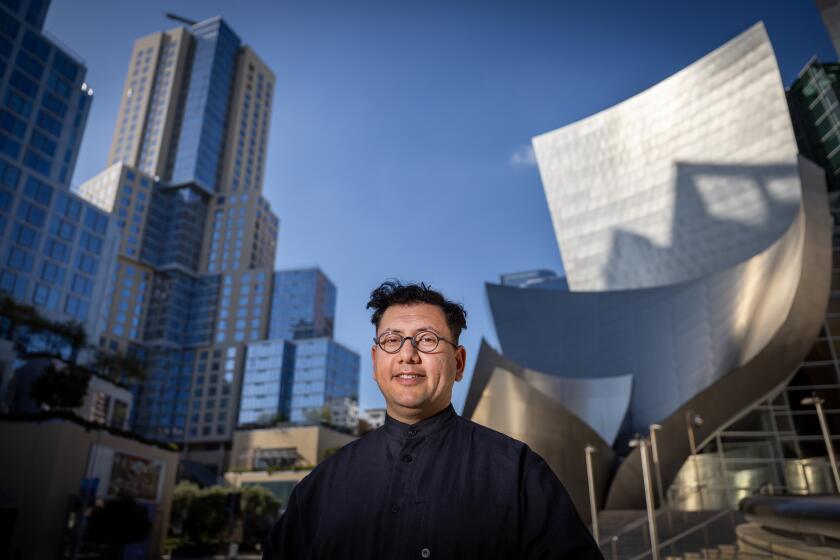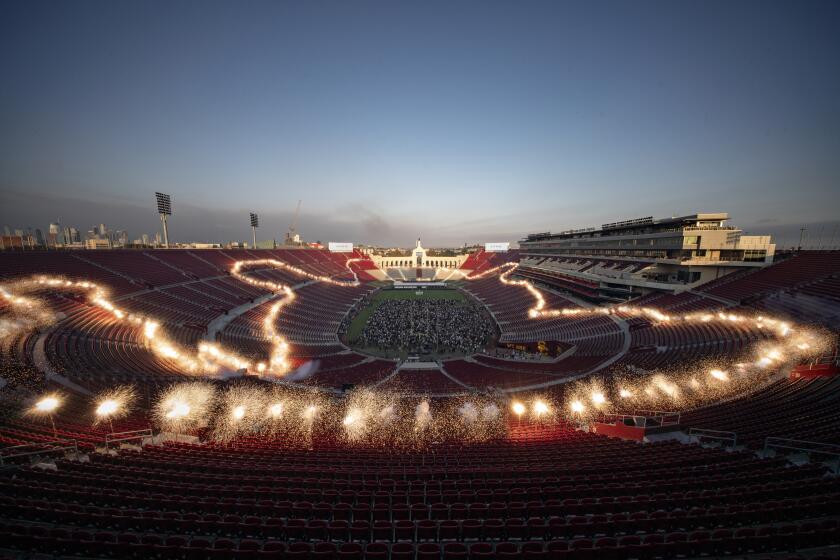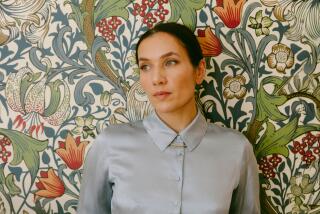It’s far from a wrap for Diane von Furstenberg: Skirball exhibition captures a ‘badass’ at 77
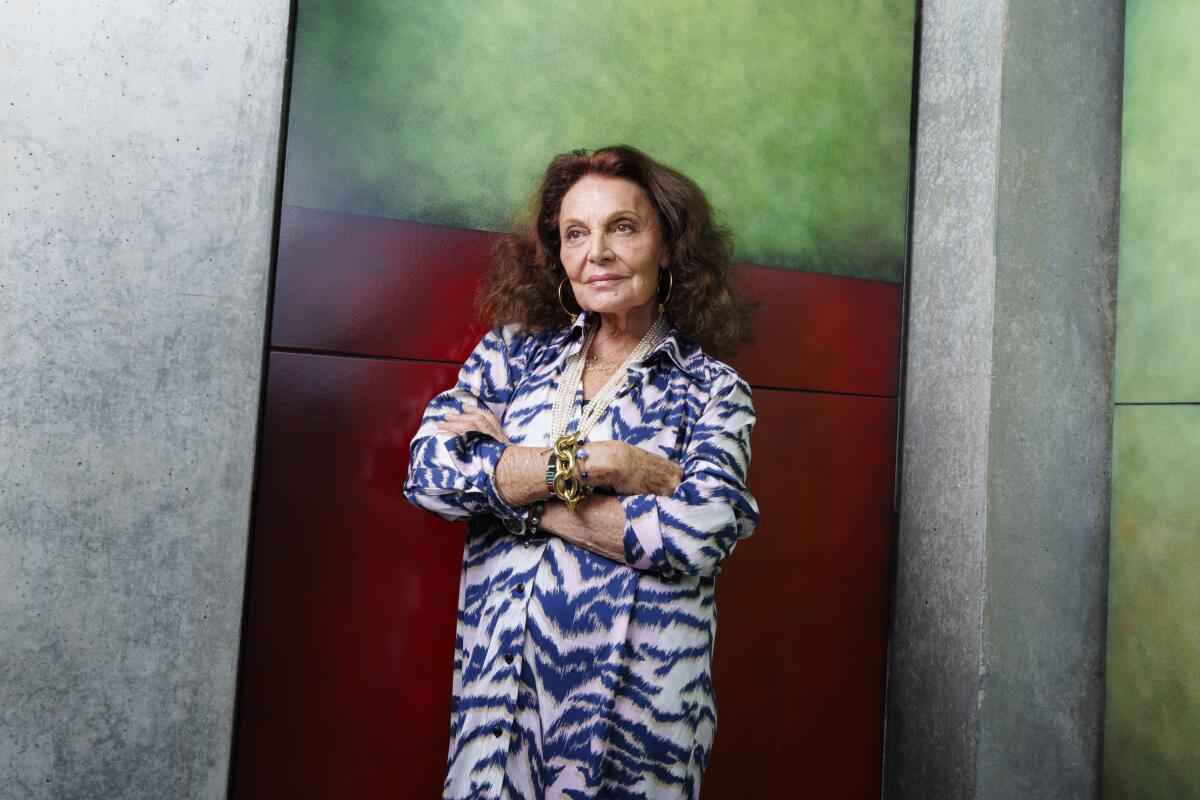
- Share via
- In previewing a Skirball exhibition with The Times, von Furstenberg remembers her first terrifying meeting with legendary Vogue editor Diana Vreeland.
- The designer muses that her famous catchphrase, “Feel like a woman, wear a dress,” may not be aging as well as her classic wrap dress.
Diane von Furstenberg stands next to a timeline of her accomplishments on a bright pink wall at the Skirball Cultural Center in L.A. “When you get old, you get lots of awards,” she says, brushing off her inclusion as one of Time’s 100 most influential people in 2015 and receiving France’s highest distinction, the Chevalier de la Légion D’Honneur, in Paris in 2020.
It’s the fashion designer’s first time touring an exhibition about her life and work, titled “Diane von Furstenberg: Woman Before Fashion,” opening at the Skirball on Thursday. Curated by Nicolas Lor, the head of exhibitions and publications at the Brussels Fashion & Lace Museum (where it originated), the show pays homage to, among other things, Von Furstenberg’s signature creation, the knitted jersey wrap dress. Introduced to the public in 1974, the design became synonymous with women’s liberation and launched a young Von Furstenberg’s career.
By 1976, she had sold a million of the dresses and appeared on the cover of Newsweek. Young, fierce and beautiful, Von Furstenberg became the face of her own brand, and by the late 1970s, it was hard to turn around without spotting someone in a wrap dress. At the end of that decade, her company’s annual retail sales were more than $150 million (or about $617 million in inflation-adjusted dollars).
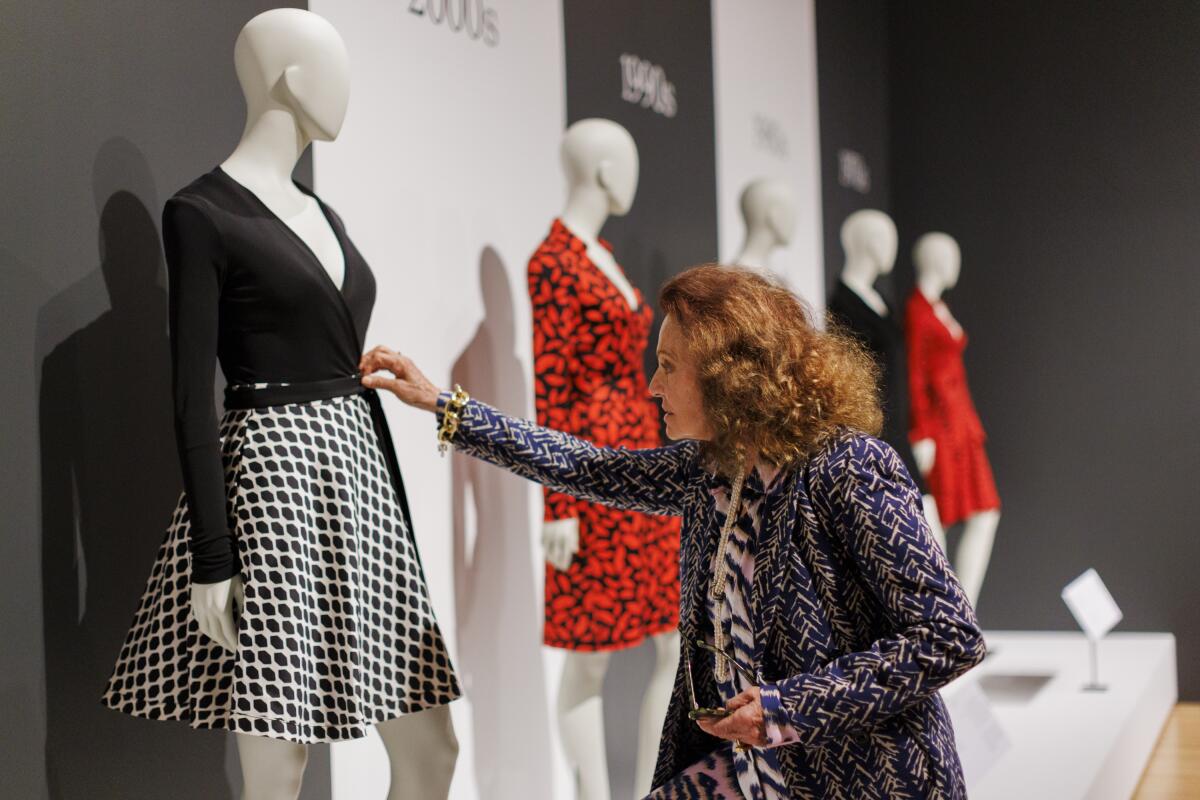
Now 77, Von Furstenberg says she has entered the winter of her life and is focused on what she calls “operation legacy,” but she doesn’t act like a person who is winding down. Dressed in a stunning wash of brightly colored patterns with a thick string of pearls, large hoop earrings and white fishnet stockings, Von Furstenberg radiates an effortless glamour. When she sits anywhere — on a couch or the ledge of a wooden stand for her dresses — she crosses her long legs with practiced perfection. The effect is of a woman always ready for a camera to snap, which makes sense since Von Furstenberg has lived her life in the spotlight.
Attention arrived early, when at 22 she married Egon von Fürstenberg, a Swiss-born prince of German descent whom she met at boarding school. Within 18 months of their marriage, Von Furstenberg had two children. It was around this time that she became determined to become an independent woman, a “badass,” she says. She didn’t know exactly what she wanted to do with her life, but after a friend’s father showed her around a fabric printing factory near Como, Italy, she began making “little T-shirt dresses.” The way she tells it, these designs came easily to her, eventually leading to T-shirt dresses with pants underneath, then tops with wrap skirts and finally to the wrap dress itself.
“I call myself a designer,” says Von Furstenberg, who switches effortlessly between French, Spanish and English depending on with whom in her entourage she is speaking. “But I’m definitely a manifester.”
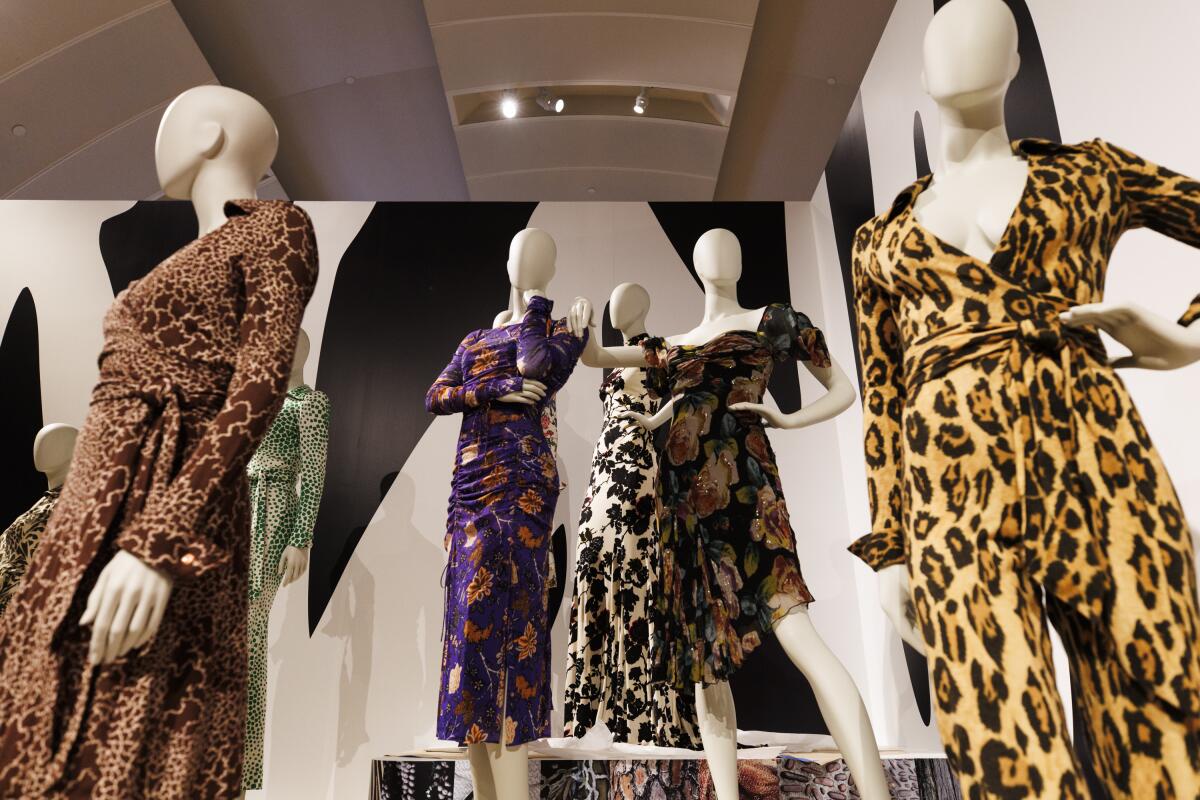
Von Furstenberg’s life does indeed seem to be guided by an invisible thread of destiny. Take, for example, the first time she met the legendary Vogue editor Diana Vreeland in the late 1960s. Von Furstenberg’s husband (who, being a prince, “knew everybody”) helped to arrange the meeting, and Von Furstenberg arrived with a big suitcase full of designs, which she put on hangers on a large rack. She recalls the office as being “super glamorous, with colors and jewelry and scented candles,” and then “all of a sudden this dragon lady comes in, hair black, black, black, and red lipstick and red nails and a big cigarette holder.”
The first thing Vreeland did, Von Furstenberg says, was push her chin up.
“Chin up!” she commanded, before bringing in two skinny models about Von Furstenberg’s age to try the clothes.
“Wonderful, wonderful, wonderful,” Vreeland said.
Artist Refik Anadol has revealed plans to open his new AI museum, Dataland, in the Grand L.A. complex near MOCA, the Broad and Walt Disney Concert Hall.
“Before I knew it, I was out the door with my suitcase,” says Von Furstenberg, and Vreeland’s assistant was telling her that she thought Vreeland liked the work and would do something with it. She told Von Furstenberg that it was almost Market Week, when the buyers come to town, and she should get a room at the Gotham Hotel, because that’s where all the California people stayed. She also told Von Furstenberg to list herself in the fashion calendar and take out a small ad in Women’s Wear Daily. Von Furstenberg did just as she was told.
She also called a photographer friend who took the now-famous picture of her sitting on a white cube in a dress with a chain-link pattern. “Feel like a woman, wear a dress” was written on the cube. Von Furstenberg says she wrote the words on a print of the photograph on a whim because she thought the box looked too bare.
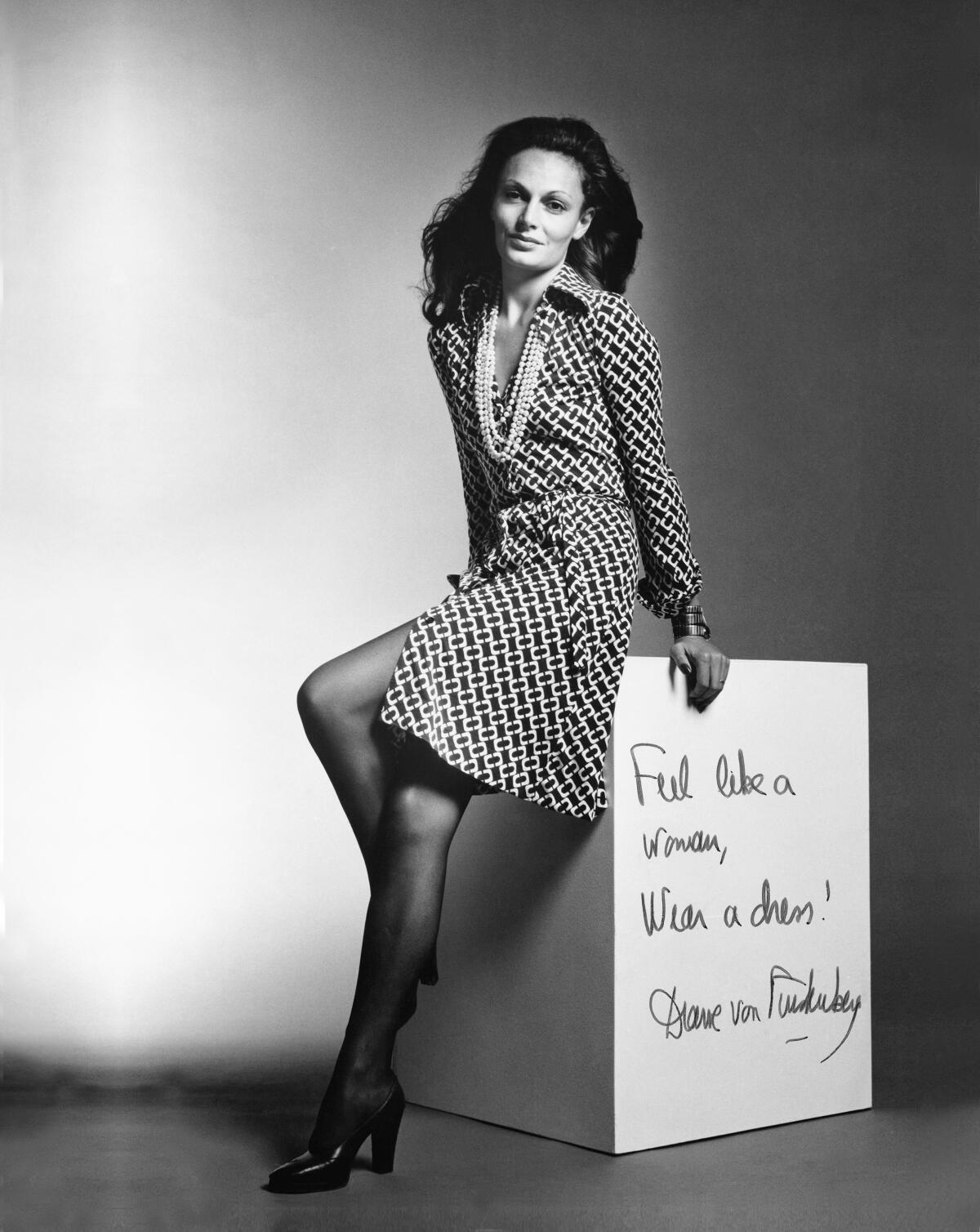
The words are as famous as she is, although she now muses, “Today I’m not even sure that it’s politically correct to say that.”
“Why?” asks Lor, sitting nearby. He loves this early story about Von Furstenberg and is fascinated with the way she blends the professional with the personal and vice versa — and how she managed to create a dress in the 1970s that is still relevant today.
“Because, ‘Feel like a woman, wear a dress,’ I’m sure that there’s plenty of reason for it not to be correct,” she says with a smile.
But she loves wearing dresses — even today. And the wrap dress continues to fascinate new generations of women.
“It’s always the young who rediscover it,” says Von Furstenberg.
A daytime fireworks display by artist Cai Guo-Qiang at the Los Angeles Coliseum was supposed to be a joyful celebration. Instead falling debris injured a few guests, and the noise and smoke angered nearby residents.
Von Furstenberg grew up in awe of women like Gloria Steinem and Angela Davis and has long been an advocate for women’s causes. Her DVF Awards, now in their 15th year, were established with her second husband, media mogul Barry Diller, in support of women committed to women’s causes globally, often in the face of great adversity.
This strength and dedication comes from her mother, a Holocaust survivor who was captured as part of the Resistance in World War II. She was imprisoned in Auschwitz and later at Ravensbrück in Germany. She gave birth to Von Furstenberg 18 months after being liberated, and Von Furstenberg says she taught her to be fearless, and also to never be a victim.
When you have a strong mother, she says, you might try to push her away, “but then you end up being completely like her.”
Von Furstenberg’s advice to young women getting started is as simple as she makes everything else in her complicated life sound:
“You own your imperfections. They become your assets. You own your vulnerability, you turn it into strength.”
'Diane von Furstenberg: Woman Before Fashion'
Where: Skirball Cultural Center, 2701 N. Sepulveda Blvd., Los Angeles
When: Thursday-Oct. 31; closed Mondays
Admission: $13-$18; free for everyone on Thursdays and for children younger than 2 daily
Information: (310) 440-4500, skirball.org
More to Read
The biggest entertainment stories
Get our big stories about Hollywood, film, television, music, arts, culture and more right in your inbox as soon as they publish.
You may occasionally receive promotional content from the Los Angeles Times.
